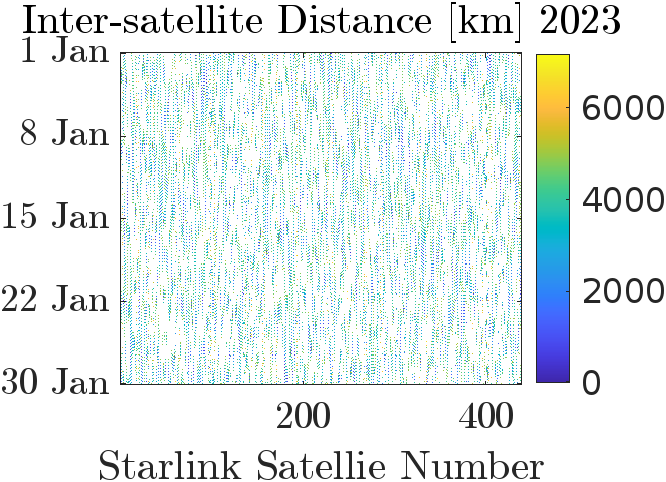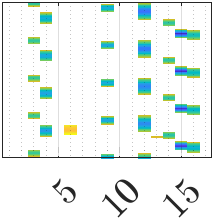A virtual environment has bees used on the local machine (running Debian 12 bookworm) to establish the working. The requirements to setup the virtual enviroment can be installed using 'pip' and the 'requirements.txt' file.
The requirements.txt file has been obtained using
pip freeze > requirements.txtThese can be used to set-up the necessary virtual environment using
pip install -r requirements.txtThe MATS Satellite is propagated in time using the TLEs. The evolution of the satellite orbit over time is examined.
The elevation of the satellite as seen from teh Esrange Ground Station has also been plotted.
For a fixed time-period, all the Starlink satellites and the MATS satellite is propagated and the number of satellites in Line-of-site of MATS are examined. The StarlinkData-2023 folder stores the data of a few starlink satellites for the year 2023. The files names in the folder correspond to the NORAD Catalog ID of the satellites.
The available data for some satellites is only upto the first 35 days of 2023. This, along with the number of satellites taken into consideration (439 satellites) is the reason for the analysis being limited to the first 30 days of January 2023.
The raw dataset were obtained from Space-Track for Starlink Satellites and MATS from 2022-12-31 to 2023-02-01. These files are stored in the folder : datafiles/StartlinkData-2023. The MATS TLE files (54227.txt) is stored separately in the folder : datafiles
The raw dataset is converted into separate TLEs for each satellite using EachSatTLEfileGenerator.py. These separate TLE files are stored in the folder : StarlinkData-2023_raw.
The positions of the satellites from a 2023-01-01T00:00:00 to 2023-01-31T00:00:00 with time-step of 60 seconds has been calculated using TLE propagation. This history of position (NumpyArray) has been stored in *.txt files in the folder : SatellitePositions-NumpyArray. Position data is then loaded using the *.txt file for further analysis.
The analysis has been simplified by assuming the Earth to be a sphere of constant radius equal to the WGS84_EARTH_EQUATORIAL_RADIUS. The mathematical formulation is based on the below presented diagram.
Thus, if
For a more realistic formulation, a percentage padding can be added to compensate for elements which hinder visibility. The highest clouds (Noctilucent clouds) are at an altitude of 80km. Hence, with the WGS84_EARTH_EQUATORIAL_RADIUS = 6378137 m i.e
Thus, if
The MATS_Starlink_LineOfSight_Analysis.py file calculates this and stores a boolean numpy array in the LOS_visibility_data.txt file based on the visibility. This is then presented in MATS_Starlink_LineOfSight_Results.py.
The Line-Of-Sight results saved as boolean values illustrate the variation of satellite visibility over time for the MATS satellite. These results even illustrate how many satellites are visible at a given time. It must be noted that these results are obtained using threshold analysis for a pre-defined threshold, which is
The results can even be used to analyse the extent of effect of the satellites owing to their distance. One of the crucial parameters is the minimum distance between a Starlink Satellite and MATS. The variation of the minimum inter-satellite distance between MATS and a Starlink Satellite is insightful.
The results are seen more prominently using a heatmap to illustrate the variation of intersatellite distances. They also illustrate the different visibility windows as well as the the relative radial velocities between the satellites.
An instance of the evolution of Line-of-Sight visibility can be seen below.
MATS microsatellite orbits on a circular, sun-synchronous orbit at an altitude of 585 km, and takes images from 75 to 110 km. This imager's FOV is

Illustration of the MATS limb observation geometry. From an orbit altitude of 585 km, the vertical field of view of the limb instrument covers nominal tangent altitudes from 75 to 110 km. image credit: MATS collaboration
Hence, the Starlink satellites in the field-of-view might affect the measurements taken by MATS. Further analysis could be aimed at determining the number of Starlink satellites in the field-of-view of MATS instead of the Line-Of-Sight, and their distance from MATS.







